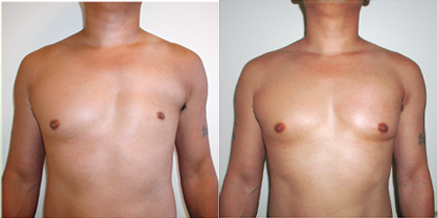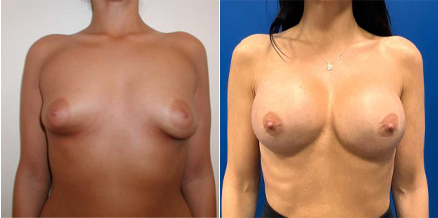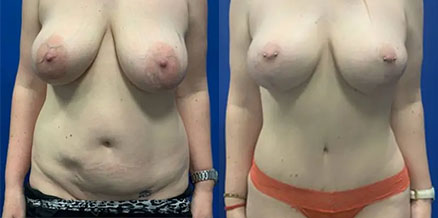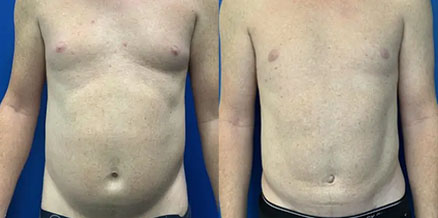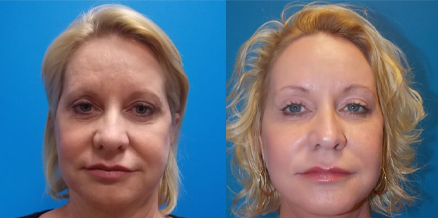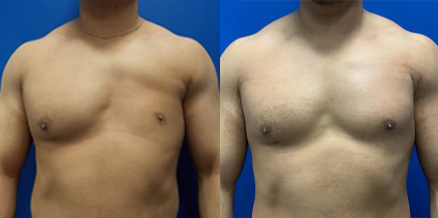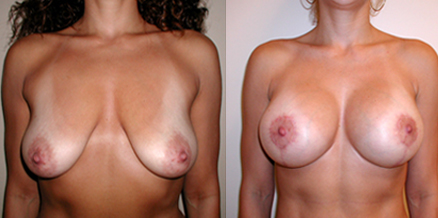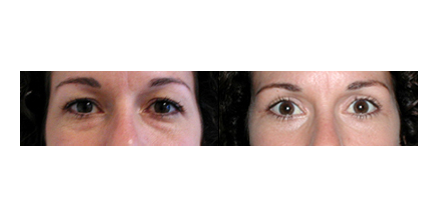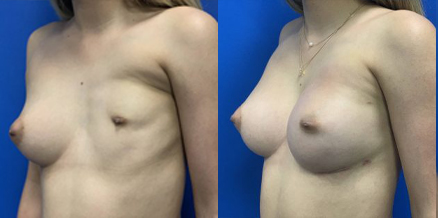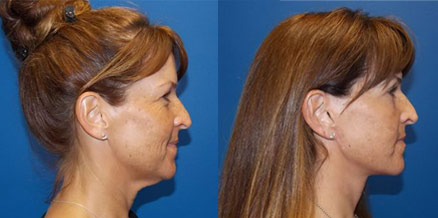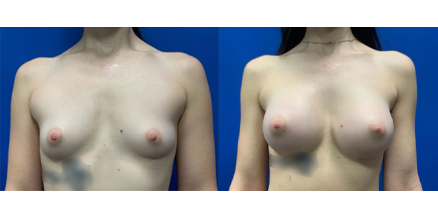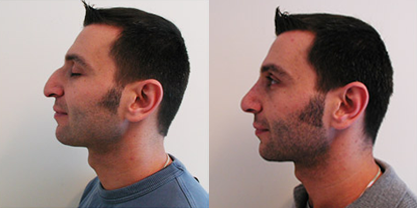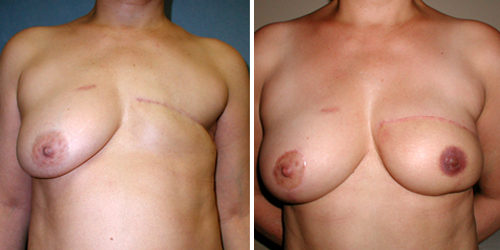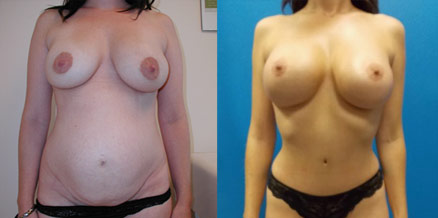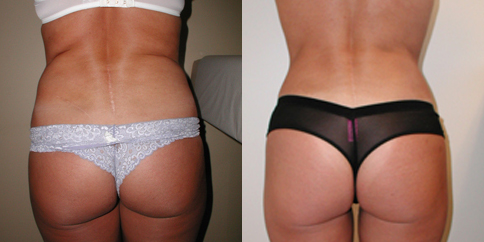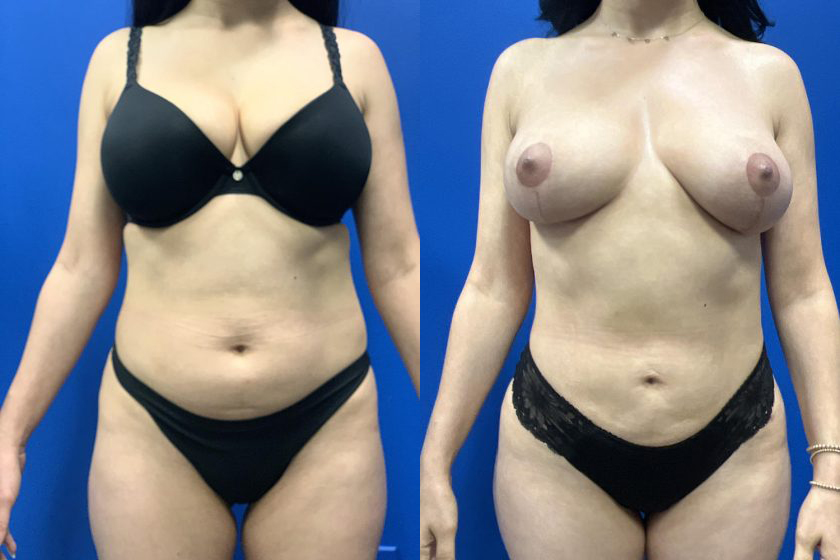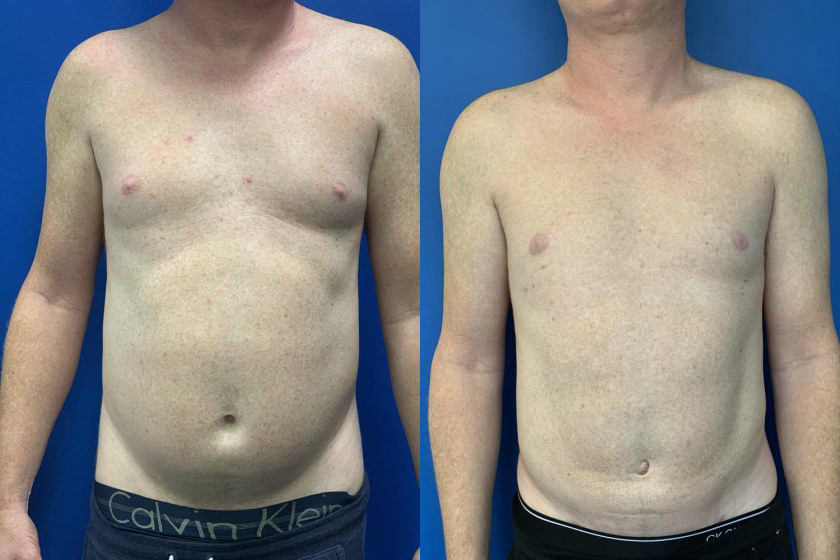Liposuction
Conveniently located to serve the areas of Beverly Hills, West Hollywood and Los Angeles
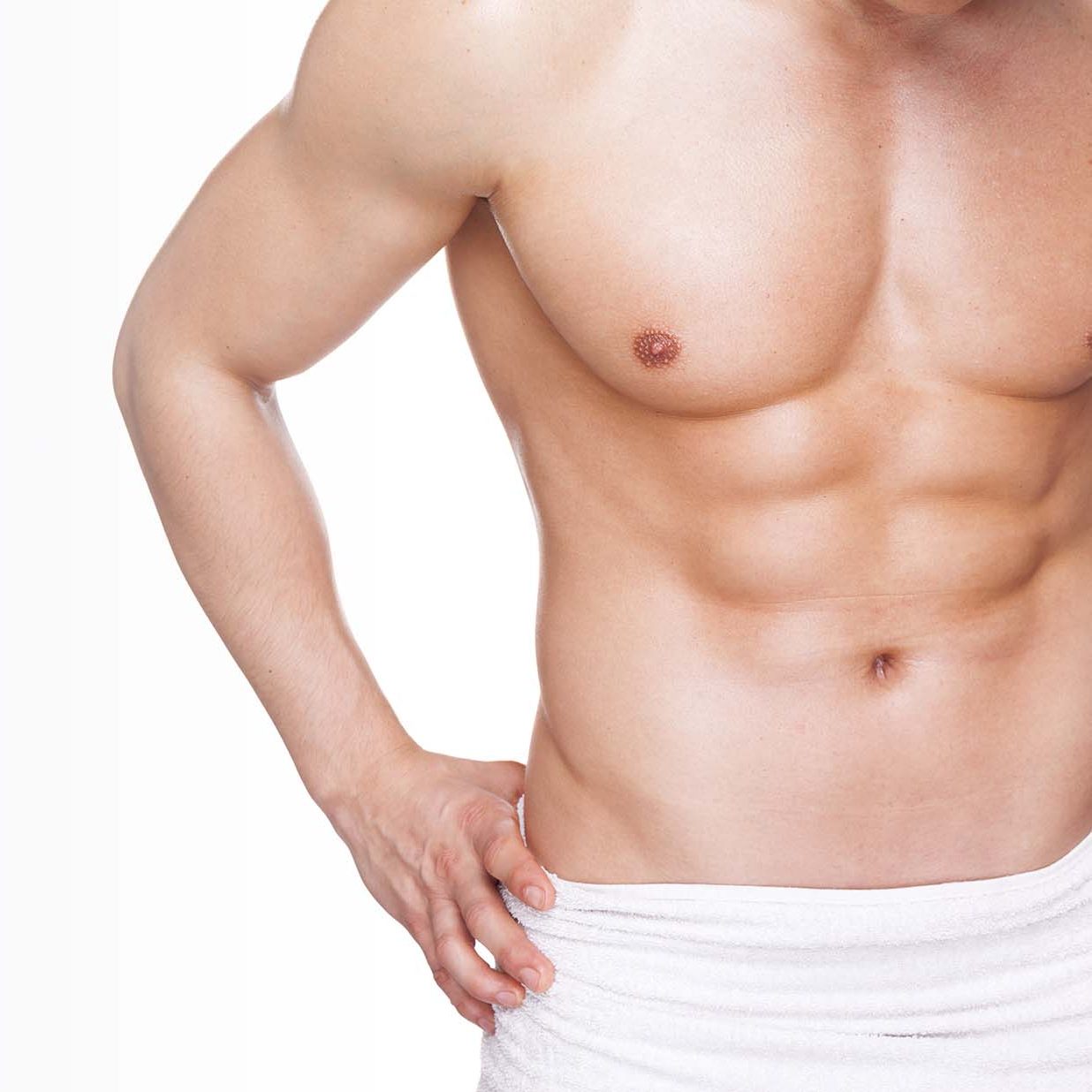
Liposuction, also known as lipoplasty, is a cosmetic procedure that removes fat, helping men and women achieve their desired body contouring goals.
It can be somewhat disheartening when diet and exercise do not achieve the desired results alone, especially when a person has worked hard to lose weight. Many individuals find that certain areas of their body do not respond to a reasonable level of fitness and exercise. And despite a healthy lifestyle, these patients continue to have “stubborn” areas of fat deposits and disproportionate body contours, often due to heredity or genetics. However, the judicious use of liposuction can improve your body contour and proportion by selectively removing localized or regional fat deposits.
Slim, reshape, and redefine your silhouette with the help of Mossi Salibian MD, Beverly Hills’ premier plastic surgeon. For more information about liposuction, and to book a personal consultation with Dr. Salibian, call (310) 550-0750 or complete a short inquiry form on our website.
Contents
- 1 Before and After Photos
- 2 About Liposuction
- 3 Benefits of Liposuction
- 4 Candidates for Liposuction
- 5 Personal Consultation
- 6 Liposuction Techniques
- 7 Fat Grafting or Fat Transfer
- 8 Cost of Liposuction in Beverly Hills
- 9 FAQ
- 9.1 Can I combine more than one liposuction area into one procedure?
- 9.2 Can liposuction be combined with other procedures?
- 9.3 How do I prepare for liposuction?
- 9.4 Does liposuction leave scars?
- 9.5 What is the recovery process like after liposuction?
- 9.6 Does fat come back if someone gains weight after liposuction?
- 9.7 Can fat travel somewhere else after liposuction?
- 9.8 When do I see the results post-liposuction?
- 10 References
Before and After Photos
View GalleryAbout Liposuction
The human body is a remarkable work of art, with each part playing a crucial role in our overall appearance. However, sometimes certain areas can be a source of frustration and dissatisfaction. Excess fat deposits in various body regions can impact our self-confidence and hinder our ability to achieve the desired aesthetic results. Thankfully, there is a solution in the form of body contouring procedures like liposuction.
Liposuction is the most commonly performed cosmetic surgery in the world. (1) It is designed to remove excess fat and reshape specific areas of the body. As a highly sought-after and customizable procedure, it has revolutionized body contouring and provided countless individuals with a newfound sense of confidence and satisfaction.
Liposuction can be performed on various areas of the body, including the following:
- Abdomen and Waist
- Thighs
- Bra rolls and Lateral Chest
- Lateral Buttocks (Trochanteric Areas)
- Upper and Lower Back
- Hips and Flanks
- Calves & Ankles
- Arms
- Submental (neck) and Jowls
- Suprapubic Fat Pad (FUPA)
Dr. Salibian specializes in liposuction and understands his patients’ unique needs and desires. With his expertise and artistic eye, he enhances the natural beauty of each individual by expertly sculpting their body and eliminating stubborn pockets of adipose tissue. Whether you’re looking to achieve a more defined waistline, sculpted thighs, trimmer arms, or a better-defined facial profile, Dr. Salibian will tailor the procedure to meet your unique goals and aspirations.
How Does Liposuction Work?
During a liposuction procedure, the surgeon makes small incisions in discreet locations, allowing for the insertion of a thin tube called a cannula. They move the cannula back and forth to loosen and suction out the excess fat cells, creating smoother contours and improved proportions. Dr. Salibian employs the latest techniques and technologies to ensure precise fat removal and minimize potential risks or discomfort.
Benefits of Liposuction
- Enhances body contour
- Permanently removes fat deposits
- Reduces stubborn fat in specific areas of the body
- Creates a more proportional and aesthetically pleasing appearance
- Allows patients to feel more comfortable in certain outfits and more confident
- Allows patients to embrace a wider range of clothing choices
Beyond the physical benefits, liposuction can also promote mental and emotional well-being. Many patients report feeling happier and more content after undergoing the procedure. The removal of excess fat can boost self-esteem and improve body image, leading to overall improved mental health and a greater sense of well-being.
How Long Do Liposuction Results Last?
The results of liposuction are long-lasting, provided you maintain a healthy lifestyle. While the procedure removes fat cells from specific areas, it is important to continue exercising regularly and following a balanced diet to prevent new fat deposits from forming elsewhere. Liposuction can serve as a motivating factor to adopt healthier habits and maintain your newly sculpted physique.
Candidates for Liposuction
Candidates for liposuction are individuals who are looking to achieve body contouring and fat removal in specific areas. Good candidates: (2)
- Have undesired fat deposits that alter the body contours from the desired body contour
- Ideally have a Body Mass Index (BMI) of 30 or lower
- Have been at a stable weight for 6 months or more
- Have good skin elasticity
It’s important to note that liposuction is not a weight loss solution or a substitute for a healthy lifestyle. It is intended for individuals who have already made efforts to lose weight through diet and exercise but are struggling with localized fat deposits that are resistant to their efforts. Liposuction is best suited for those who are at a stable weight and have realistic expectations about the outcomes of the procedure.
Personal Consultation
Dr. Salibian’s expertise lies in his ability to closely evaluate your body contours and create individualized treatment plans that are tailored specifically to each patient’s needs. He understands that every patient is unique, which is why he takes into account factors such as your body type, skin elasticity, and specific areas of concern when formulating the best approach.
During your consultation, you will have the opportunity to ask any questions you may have and express any concerns. Dr. Salibian believes in open and honest communication, ensuring that you are well informed and comfortable with your decision to undergo liposuction.
To book your consultation with Dr. Salibian, call (310) 550-0750 or complete a short form for more details.
Liposuction Techniques
Liposuction uses a variety of techniques. One of these, the tumescent technique infuses the fatty tissue with sterile normal saline and a vasoconstricting agent to minimize blood loss as well as a local anesthetic before suctioning the fatty tissue out. Another technique is known as ultrasound-assisted lipoplasty or UAL. This method uses an ultrasound probe to break up the fat cells before they are suctioned out of the body. In PAL or power-assisted liposuction, a vibrating probe is used to break up the fatty architecture and assist in the ease of suctioning the fat.
Not all the fat removed is thrown away. Often patients have unwanted areas of depression and hollowness or divots that are easily addressed with fat transfer and grafting at the time of liposuction. The harvested fat is prepared for grafting in a sterile fashion and is re-injected in areas of fat loss such as the face, cheeks, and buttocks. These techniques have been refined in the last several decades so the transferred fat has a reasonable chance of grafting with good long-term results.
The architecture of fat and its distribution vary among men and women. Moreover, the type of fat varies depending on where it is located in the body. For example, in men with gynecomastia, the fatty tissue is fibrous (mixed with a dense network of connective tissue) and requires a specialized technique to remove the fat tissue and not cause indentations of the overlying skin or the nipple region. To achieve this successfully, in addition to the judicious technique used, specialized cannulas are used that have specially designed suction tips that best address the fibrous fatty tissue with minimal damage to the overlying subcutaneous fat layer and skin.
Fat Grafting or Fat Transfer
Fat grafting has become popular in the past several years due to the marketing of the “Brazilian Butt Lift” or “BBL”. This is essentially liposuctioned fat of the mid-section and waist transferred to the buttock region to augment the size of the buttocks.
How Does Fat Grafting Work?
Fat grafting for cosmetic and reconstructive indications both involve the harvesting of fat. Harvesting is performed by special liposuction cannulas that do not damage the fat cells. The harvested fat is then transferred to special sterile canisters in a closed system that does not expose the harvested fat cells to the operating room atmosphere. It is then allowed to sit as gravity separates the cellular portion from the heavier serous or fluid portion of the harvested fat. This separation is enhanced by passing the separated fat through a fine mesh and the fat is arranged in 3 to 10 cc syringes and injected into the areas that need additional fat.
Fat Grafting for Men
For men, a common area for fat grafting is the buttocks for a rounder buttock contour and care is taken not to feminize the appearance. For men as for women, the face, cheeks, jawline, and chin areas are also popular places for fat grafting. In addition, in patients with Poland Syndrome, if the chest defect is minimal and does not warrant the placement of a custom-made chest implant, fat grafting has resulted in excellent outcomes in Dr. Salibian’s practice.
Reconstructive Fat Grafting
In the reconstructive arena, the most common areas for fat transfer are to the reconstructed breasts, especially to areas of the breast and chest wall due to the shrinkage of the soft tissues and atrophy of the subcutaneous fat as a result of the radiation treatment to these areas. Fat grafting can be performed around both autologous as well as implant-based breast reconstruction to improve the symmetry, fullness, and appearance of the reconstructed breast.
Factors That Affect Fat Grafting
In all fat grafting procedures, judicious care and experience dictate the amount of fat that is grafted to an area. There are important variables that are considered to optimize fat take (long-term fat survival). Some of these variables are:
- The nature of the tissue bed that the fat is being transferred into, such as the blood supply and compliance of the tissues
- The degree of pliability that the tissue possesses
- The fine fat transfer technique details
- The types of cannulas used to inject the fat with
- The quantity of injected fat per area among many other considerations
Fat transfer when performed properly and tastefully enhances the aesthetic appearance and proportions without being grotesque or even evident. It has essentially replaced the need for buttock silicone implants in my practice and is a procedure that has evolved through the years with improving techniques and outcomes.
Cost of Liposuction in Beverly Hills
When comparing liposuction costs, it is crucial to prioritize the expertise and experience of the plastic surgeon. Dr. Salibian is a highly skilled and board-certified plastic surgeon with years of experience performing successful liposuction procedures. With his meticulous attention to detail and commitment to patient satisfaction, you can trust that your investment in liposuction with Mossi Salibian MD will yield exceptional results.
To learn more about our liposuction procedures and to schedule a consultation with Dr. Salibian, please call (310) 550-0750. Let us guide you on your journey to a more sculpted and confident you!
FAQ
Can I combine more than one liposuction area into one procedure?
Yes, depending on your treatment plan, you may be able to target more than one area for liposuction during the same surgical time. Patients may also consider fat transfer to another part of the body such as the buttocks.
Can liposuction be combined with other procedures?
Yes, liposuction can be combined with other cosmetic procedures to achieve comprehensive body rejuvenation. Depending on your specific goals, we may recommend combining liposuction with procedures such as a tummy tuck, breast augmentation, as in a mommy makeover, or thigh lift to address multiple areas of concern and provide optimal results. During your consultation, we will discuss all available options and create a customized treatment plan tailored to your needs.
How do I prepare for liposuction?
You will be given pre-op instructions as to how best to prepare for liposuction surgery. Preparing for liposuction may involve starting or stopping certain medications. If you smoke or vape, you must stop in the months before, as nicotine delays the healing process and increases chance for an infection.
Does liposuction leave scars?
The incisions made during liposuction are typically very small, ranging from a few millimeters to a centimeter in length. Dr Salibian takes great care in placing the incisions strategically in inconspicuous areas, such as at natural skin creases or within the bikini line, to minimize visible scarring. Over time, any scars that do form will fade and become less noticeable.
What is the recovery process like after liposuction?
Liposuction recovery varies from patient to patient, but it generally involves some swelling, bruising, and discomfort in the treated area. Patients typically wear compression garments to help reduce swelling and support the healing process. Most patients can return to work and normal activities within a week or two, although strenuous exercise should be avoided for several weeks. Post-op instructions will detail the necessary recovery steps so you will not be at a loss as to what to expect after liposuction.
Does fat come back if someone gains weight after liposuction?
Once fat cells are removed with liposuction, the remaining fat cells do not multiply if someone gains weight; however, the existing fat cells will get “fatter” if someone were to gain a significant amount of weight post-liposuction. What is more commonly noted, however, is that areas that were not liposuctioned (as these areas contain naturally more fat cells) will appear fatter than the areas that were liposuctioned should someone gain weight after liposuction.
Can fat travel somewhere else after liposuction?
Fat cannot “travel” from one place to another but should someone gain significant amount of weight after liposuction, the areas that were liposuctioned would gain less in volume or in size and appearance, than areas that were not liposuctioned; giving the appearance that fat “travelled” from one area to another. This is why it is important to maintain a healthy lifestyle, a regular regimen of exercising and proper nutrition both in preparation before, and after having liposuction to assure that the results after liposuction, liposculpting and lipocontouring last a lifetime.
When do I see the results post-liposuction?
You will see the results right after your first postoperative visit. However, the final results will take up to four to six months until all swelling has dissipated and numb areas have fully recovered.
References
- Bellini E, Grieco MP, Raposio E. A journey through liposuction and liposculpture: Review. Annals of Medicine and Surgery. 2017;24:53-60. doi:https://doi.org/10.1016/j.amsu.2017.10.024
- Bartow MJ, Raggio BS. Liposuction. PubMed. Published 2022. https://www.ncbi.nlm.nih.gov/books/NBK563135/

